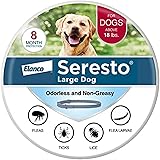Unlock the Hidden Goldmine: 6 Proven Steps to Crushing It with Mid-Term Rentals and Banking Steady Cash Every Month
Remember those glory days back in 2019 when owning a rental property felt like printing money? Tenants knocking down the door, rents climbing like clockwork, and cash flow was as reliable as your morning coffee. But here’s the kicker—those smooth sailing days? They’re kinda behind us. Today, the market feels like everyone’s cramming into the same narrow lanes, chasing the same tired strategies. So what’s the savvy investor supposed to do? Enter mid-term rentals—leases stretching from about a month to nine months—that are stealthily reshaping the real estate game. These aren’t your usual short-term flings or decade-long commitments. Instead, they strike a sweet, flexible balance—bringing in better income than traditional leases while ditching the headaches of constant turnover. Especially in markets humming with hospitals, universities, and corporate moves, mid-term rentals are becoming the hidden gem for steady, versatile cash flow. Curious why this under-the-radar strategy might just be your next power move? Let’s dive in. LEARN MORE
Imagine it’s 2019, and you’ve got a rental property that practically pays for itself. Tenants line up, rents climb every year, and cash flow feels like a given.
Or maybe you were one of the lucky ones who flipped houses when material costs were low and buyers were eager—every deal looked like a win.
Some of us even dipped into Airbnb when it felt like you could throw a futon into a spare room and instantly be booked solid.
In today’s market, it can seem like everyone is squeezing into the same crowded lanes. While it feels like the days of effortless, cash-flowing properties are behind us, another profitable option has quietly been gaining momentum. Mid-term rentals (leases that run anywhere from 30 days to nine months) are carving out their own space in the market.
Why? Because they solve problems on both ends. Not only do they give you more income potential than a standard lease, but they also cut out the constant turnover of short-term stays. MTRs attract tenants who stay long enough to feel like neighbors, but not so long that you lose flexibility. And in markets where demand is tied to hospitals, universities, or corporate relocations, MTRs can feel less like a gamble and more like a steady play.
Real estate has always been about adapting. When one door closes (or one market softens), the smartest investors look for the next opening… and right now, mid-term rentals are that opening.
They aren’t flashy. They don’t make headlines like flipping houses or short-term rentals. But they’re quietly producing reliable cash flow in markets where “reliable” is more complicated and challenging to find.
Why Mid-Term Rentals Make Sense Right Now
There is a real demand for furnished housing. Corporate relocations, traveling nurses, and digital nomads all require this type of accommodation for a few months at a time. A March 2025 market survey found cities like Detroit and Cleveland produced gross yields above 10% for MTR investors, higher than many long-term rentals in the same markets.
Second, managing turnover is easier. You’re not coordinating cleaners every weekend or managing lockouts at midnight. Instead, guests stay for months, not nights. That means lower costs, fewer headaches, and a steadier stream of income.
Third, tenant quality often improves. Instead of weekend partygoers, you’re working with professionals who value stability. Many companies and hospitals even sign contracts directly, reducing risk and late-night texts.
How to Succeed in MTRs
Of course, you can’t just throw a couch in the living room of your long-term rental and call it a “furnished” mid-term rental. Here are six steps to succeeding in this lucrative niche:
1. Location
A furnished home far from hospitals, universities, or major employers won’t attract three-month tenants. Find where demand already exists: medical hubs full of travel nurses, universities hosting visiting professors, companies relocating employees, or construction sites bringing in crews for big projects.
2. Pricing
Think of MTR pricing as a blend. Start with your long-term rent baseline, then add a premium for furnishings, utilities, and flexibility. In hot medical hubs or business centers, this can double your monthly rent compared to a traditional tenant.
3. Finding tenants
Travel nurse agencies, relocation specialists, and corporate housing programs are prime sources. You can also list for free through TurboTenant’s rental advertising platform to cast a wide net and filter for quality tenants.
4. Furnishings and experience
Unlike long-term tenants, MTR guests expect turnkey convenience. Reliable Wi-Fi, a stocked kitchen, and comfortable beds are nonnegotiable. Add thoughtful touches (like blackout curtains for night-shift nurses) and you’ll outshine the competition.
5. Legal and lease agreements
No matter the term, you need a lease. A TurboTenant rental lease agreement with MTR addendums keeps you protected. Don’t treat these as casual arrangements; treat them like the business they are.
6. Management Made Simple
Here’s the secret sauce: Software turns MTRs into a scalable business model.
Why Investors Should Care
For buy-and-hold landlords frustrated by slowing rent growth, MTRs provide higher monthly income without the volatility of short-term rentals. For flippers squeezed by shrinking margins, holding a project as a mid-term rental instead of rushing to sell can generate cash flow while waiting for a better market. And for multifamily operators, dedicating a portion of units to MTRs can diversify income streams and attract corporate contracts.
In short, mid-term rentals aren’t a fad; they’re the natural evolution of a market where investors need flexibility. Occupancy is steadier than short-term rentals, returns are more substantial than long-term holds, and management is easier than ever with modern tools.
Final Thoughts
Mid-term rentals are quietly filling the gap that the average real estate investor was struggling with. They deliver stable income, quality tenants, and fewer headaches. And with platforms like TurboTenant handling leases, screening, rent collection, and bookkeeping, you can treat them like the serious business they are, without getting bogged down in admin work.
So if you’re staring at flat cash flow or chasing thinner and thinner deals, maybe it’s time to ask: Is mid-term the new sweet spot?


















Post Comment